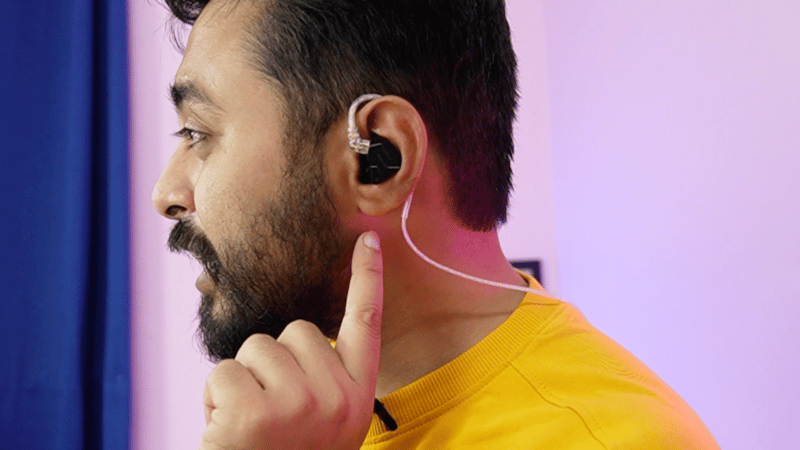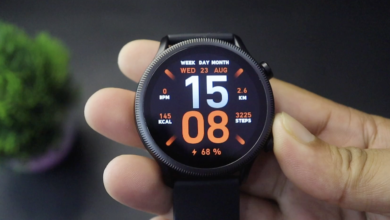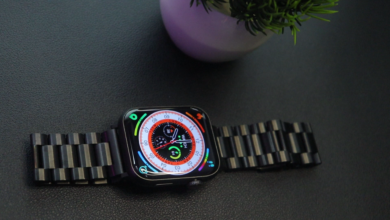In Ear Monitor (IEM) vs Normal Earphone, why does IEM sound better than a normal earphone?

What is an In Ear Monitor (IEM)?
IEM means Inear monitor, a special type of earphone mostly used by stage performers, sound engineers, music enthusiasts, and audiophiles.
IEM can provide very clear and crisp sound, with a loud and powerful base, other than a normal earphone IEM comes with a dual driver configuration, different drivers are used for high-frequency sound and low-frequency sound, together it can provide a boomy base as well as clear and crisp treble.
IEMs are specially designed for better gripping and comfortable to use for lon time without any dis-comfort, outer cell made such a way which can provide sound isolation.

Difference between In Ear Monitor (IEM) and a Normal Earphone
here’s a table comparing In Ear Monitors (IEMs) and normal earphones:
| Feature | In-Ear Monitors (IEMs) | Normal Earphones |
|---|---|---|
| Sound Quality | Superior sound quality with detailed audio reproduction; often used by musicians and audiophiles | Decent to good sound quality, suitable for casual listening |
| Fit and Comfort | Custom or multiple sizes of ear tips for a secure and comfortable fit; often used for extended periods | Standard fit; may not be as secure or comfortable for long use |
| Noise Isolation | Excellent passive noise isolation due to deep insertion into the ear canal | Moderate noise isolation; may allow more ambient sound |
| Usage | Professional use in live performances, studio monitoring, and critical listening | General use for music, calls, and daily activities |
| Durability | Typically more durable with replaceable cables and parts; designed for rigorous use | Varies widely; generally less durable, often with fixed cables |
| Price Range | Generally more expensive, with prices ranging from mid to high-end | Wide range of prices, often more affordable |
| Customization | Can be custom-molded to fit the user’s ear perfectly; options for different drivers and tuning | Limited customization options; standard designs |
| Portability | Compact and portable; often come with carrying cases | Generally portable, though designs and cases may vary |
| Microphone and Controls | Less common in professional IEMs, though some consumer models include inline microphones and controls | Often include inline microphones and controls for calls and music management |
| Sound Isolation Type | Passive (through a tight seal) | Passive (through earbud design), but usually less effective |
| Application | Professional audio monitoring, critical listening, and high-fidelity audio enthusiasts | Casual listening, daily use, and convenience |
This table outlines the primary differences between IEMs and normal earphones, highlighting their distinct features and typical applications.
Driver Configuration IEM:
IEM basically comes with dual driver configuration, a single IEM consists of 2 drivers, one high-frequency driver that handles trible parts and another low-frequency driver is there for the base part, there are different types of low and high-frequency driver combinations used in IEMs most common drivers are follows,
In-Ear Monitors (IEMs) can have various driver configurations, each affecting sound quality and performance. Here’s an overview of the common driver configurations found in IEMs:
| Driver Configuration | Description | Advantages | Disadvantages |
|---|---|---|---|
| Single Dynamic Driver | Uses one dynamic driver per earpiece | Rich bass response, warm sound signature | Limited detail and clarity compared to multiple driver setups |
| Single Balanced Armature Driver | Uses one balanced armature driver per earpiece | High detail and clarity, compact size | Limited bass response, can sound thin or analytical |
| Multiple Balanced Armature Drivers | Uses two or more balanced armature drivers per earpiece, each tuned for specific frequencies | Excellent detail, clarity, and separation of frequencies | Can be expensive, complex crossover design required, may lack bass impact |
| Hybrid Drivers | Combines dynamic and balanced armature drivers (e.g., dynamic for bass, balanced armature for mids and highs) | Best of both worlds: dynamic bass and detailed mids/highs | Can be expensive, complex tuning required to balance different driver types |
| Electrostatic Drivers | Uses electrostatic drivers which require special amplification | Extremely detailed and accurate sound | Very expensive, requires external amplifier, less common in IEMs |
| Planar Magnetic Drivers | Uses planar magnetic technology similar to high-end over-ear headphones | Excellent detail, fast transient response, low distortion | Typically larger and heavier, requires more power, less common in IEMs |
| Tribrid Drivers | Combines three types of drivers (e.g., dynamic, balanced armature, and electrostatic) | Can offer the most comprehensive and detailed sound across all frequencies | Very expensive, complex design and tuning, can be difficult to drive properly |
| Piezoelectric Drivers | Uses piezoelectric elements to create sound | Capable of very high frequency response, can add extra sparkle and detail | Can sound harsh or sibilant if not well-tuned, less common in mainstream IEMs |
| Bone Conduction Drivers | Transmits sound through the bones of the skull directly to the inner ear | Leaves ear canals open, suitable for specific professional or medical uses | Limited frequency range, different sound perception experience, less common in mainstream |
Explanation of Common Terms:
- Dynamic Drivers: Use a diaphragm attached to a voice coil, which moves within a magnetic field to produce sound. Known for strong bass response.
- Balanced Armature Drivers: Use an armature that moves within a magnetic field, providing detailed and precise sound. Often used in multi-driver configurations.
- Hybrid Drivers: Combine different types of drivers to take advantage of their individual strengths.
- Electrostatic and Planar Magnetic Drivers: Typically offer very high fidelity but are more complex and expensive.
There are different types of In Ear Monitor (IEM) out there some are very expensive, but also some good IEMs come at very affordable prices, depending upon their driver quality price varies, if you are a beginner audiophile you should try KZ-ZSN Pro X by KZ, very good IEM under 2000 rs.
KZ-ZSN Pro X has a customized 30095 high-frequency balanced armature and a 10mm mid-bass low-frequency dynamic driver in a hybrid setup. Which can deliver dynamic lows, soothing mids, and clear highs.
also has a metal zinc alloy faceplate and resin housing and plastic mess, and the cavity is crafted from imported resin, additionally the plastic mesh design mitigates the risk of detachment associated with metal mess due to adhesive viscosity concerns.
also, cable is detachable so if you wish to upgrade your IEM in future you don’t need to change the wire, you can simply purchase an IEM module and use in same wire.
mic and without mic to both cable choice is available.
Available on Amazon:






